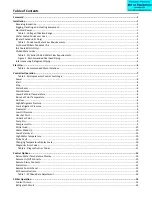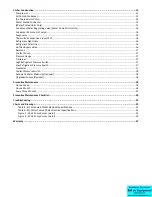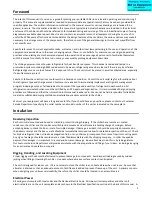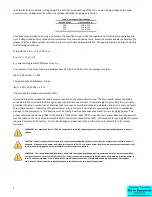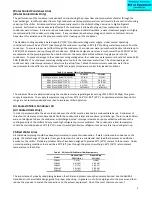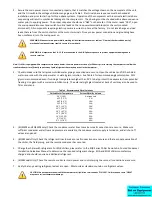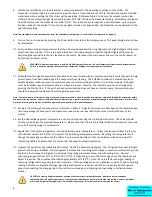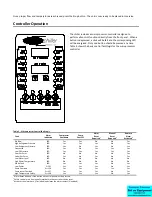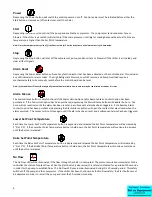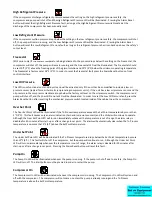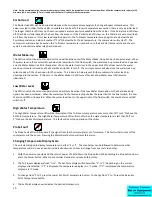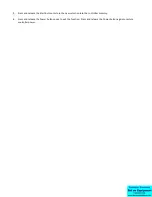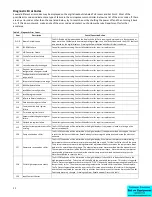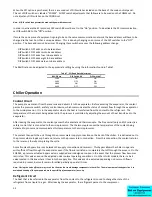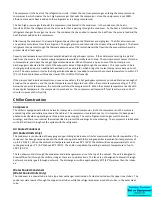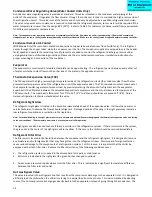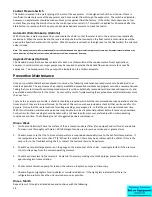
4
unsatisfactory chiller performance is poorly designed piping. Avoid unnecessarily long lengths of hoses or quick disconnect
fittings that offer high resistance to water flow. When manifolds are required for water distribution, they should be
installed as close to the use point as possible. Provide flow-balancing valves at each machine to assure adequate water
distribution in the entire system. Typically when piping is overhead with a total run length over 25 feet (8 M) there should
be a check valve in the supply line and an inverted P trap with a vacuum break valve installed as shown in Figure 1. The
height of the return line must not exceed 25 feet (8 M) when using an inverted P trap configuration. If a vertical rise
greater than 25 feet (8 M) is required, a solenoid valve must be installed in the return line at the chiller instead of inverted P
trap with vacuum break.
Figure 1 - Recommended Overhead Piping
Interconnecting Refrigerant Piping
(EQR Models Only) The chiller unit is shipped with a nitrogen holding charge and has a full charge of oil, excluding the
additional charge for field piping. Proper evacuation is required prior to charging with refrigerant. The chiller is for use only
with the air-cooled condenser provided with the unit. The following section covers the required piping between the chiller
and the provided air-cooled condenser.
Caps are located on the discharge and liquid lines. These line sizes do not necessarily reflect the actual line sizes required
for the piping between the chiller and the air-cooled condenser. The installing contractor need only provide the
interconnecting piping between the chiller and the air-cooled condenser.
Refrigerant piping size and piping design has a significant effect on system performance and reliability. For specific pipe
sizing and configuration, refer to the EQR Series Chiller Remote Air Cooled Condenser Installation Guidelines Manual. All
piping should conform to the applicable local and state codes. Use refrigerant grade copper tubing only and isolate the
refrigeration lines from building structures to prevent transfer of vibration. Do not use a saw to remove end caps. This
might allow copper chips to contaminate the system. Use a tube cutter or heat to remove the caps. When sweating copper
joints it is important to flow dry nitrogen through the system. This prevents scale formation. Do not use soft solders. For
copper-to-copper joints use a phos-copper solder with 6% to 8% silver content. Use a high silver content brazing rod for
copper-to-brass or copper-to-steel joints. Only use oxy-acetylene brazing.
Start-Up
Every unit is factory set to deliver chilled water in accordance with the standard operating specifications for that particular
chiller. Due to variables involved with different applications and different installations, minor adjustments may be required
during the initial start-up to ensure proper operation. The following start-up procedure should be followed in sequence. If
trouble is encountered during start-up, the fault can usually be traced to one of the control or safety devices. This outline
can be used as a checklist for the initial start-up and for subsequent start-ups if the chiller is taken out of service for a
prolonged period of time.


